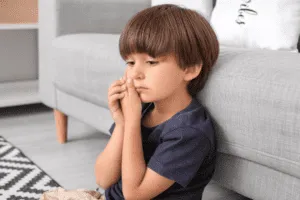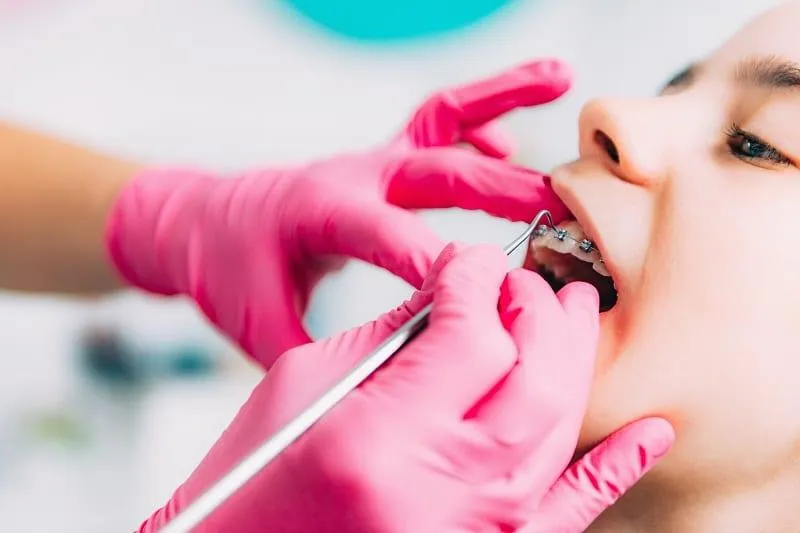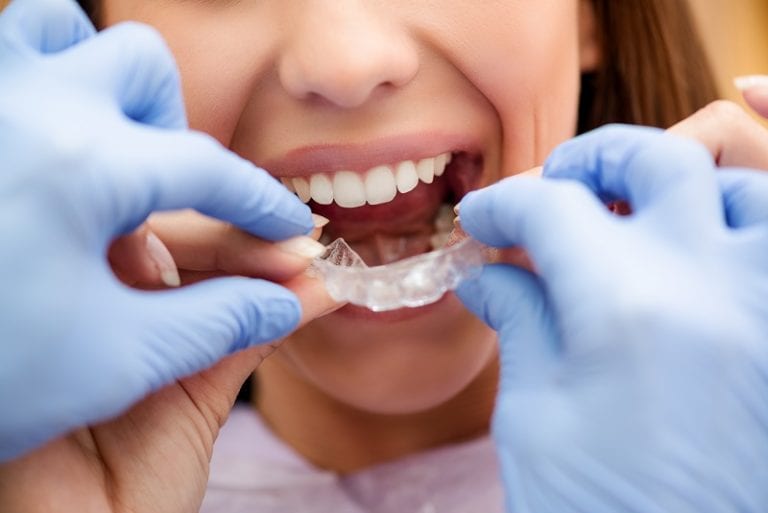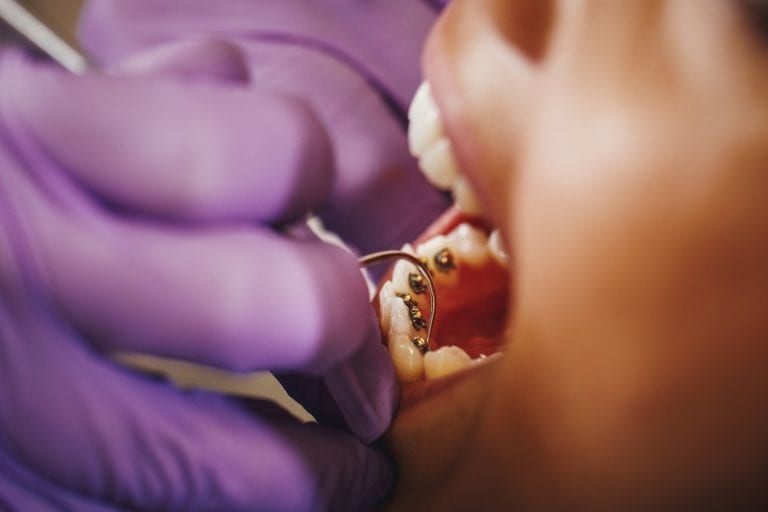Read All About It
Dental Related Articles


Pediatric Dentists and Orthodontists: Does My Child Need Both?
In short answer … yes! Your child needs both a pediatric dentist and an orthodontist because they specialize in different areas of dental health care.
What’s The Difference Between A Pediatric Dentist And An Orthodontist?
Pediatric dentists are mostly concerned with the treatment of the teeth, gums, and jaw. They train extensively in dental school and during residencies, before passing Board certifications, to learn the procedures to care for teeth during infancy, childhood, and on into adulthood.
Orthodontists treat irregularities of the teeth and jaw. They are mostly concerned with the placement of teeth in the mouth, often using appliances to straighten the teeth. Orthodontists have the same basic training as dentists, but they have specialized training and experience beyond the basics in order to learn specialized orthodontic care procedures.
Why Should My Child See A Pediatric Dentist?
According to HealthyChildren.org, “Today, early childhood dental caries—an infectious disease—is 5 times more common in children than asthma and 7 times more common than hay fever.” A pediatric dentist is the person primarily responsible for taking care of your child’s teeth (besides your child and you, of course).
They provide a wide variety of treatments when it comes to oral care for your child beyond the most common preventative care treatments of cleaning and fluoride applications. They may advise on nutrition and diet, provide oral exams for infants; counsel parents on habits that can affect teeth like thumb sucking or excessive pacifier use; fill cavities and repair tooth defects; diagnose and manage diseases of the mouth and gums; or perform emergency tooth repair for injuries from accidents.
Pediatric dentists help to identify risk factors related to the teeth and develop preventative strategies. They also recommend to parents whether and when they should take their child to the orthodontist.
Why Should My Child See An Orthodontist?
Hurst Pediatric Dentistry sees young children with braces all the time. What’s that about? Most people can’t imagine that a young child may need to see an orthodontist. They tend to think that a trip to the orthodontist should not even be considered until their child has adult teeth. However, some issues need early attention while the child is growing and before all of the permanent teeth are in place.

The goal of an orthodontist is to improve their patient’s bite and smile. An aligned bite means your child will be able to chew and speak properly. A healthy, pretty smile can positively affect your child’s self-esteem.
By seeing an orthodontist earlier rather than later, your child’s teeth have the chance to be guided into place while your child’s teeth and jaw are still growing. This can tremendously help future treatment, making it easier on the patient and usually cutting the time needed for a child to wear braces or appliances.
When Should You Start Thinking About Orthodontics For Your Child?
Although the American Association of Orthodontists recommends your child’s first orthodontic exam around age seven, there is not one specific age when parents should seek treatment. More importantly, a parent should pay close attention to what’s happening inside their child’s mouth. Depending on the issue their child is having and the stage of development their child’s teeth are in, treatment can either be very necessary or not necessary at all.
Your pediatric dentist may recommend that your child see an orthodontist, as your child may have any one of several issues that would require the help of an orthodontist, including:
Overbites
Underbites
Crossbites
Misaligned teeth
Gaps in teeth
Tongue-thrusting
Mouth breathing
Teeth grinding
Teeth clenching
Early or late loss of baby teeth
Trouble with chewing and biting
Jaw making sounds or shifting out of place
Cheek or roof of mouth biting
Face exhibiting asymmetry
Difficulty speaking
Some patients may require tooth movement only, while others may need help with guiding the growth of their jaws or correcting a sucking habit or abnormal swallowing pattern that can reshape the bone if left unattended. Working together, your pediatric dentist and orthodontist can advise you on the ideal time for your child to be treated.
Questions Parents Ask About Orthodontics For Children
What type of braces are there for children?
When people hear the word ‘braces’ most recall visions of railroad tracks across their teeth held on with metal bands and pressure applied by rubber bands to move the teeth. That is one form of braces, but any appliance used to apply a steady pressure can be considered a brace.
There is the brackets, wires, and rubber bands type, the lingual or behind-the-teeth type, the aligners which are the clear plastic tray type, headgear which is the pressure applying type using a stretchy band around the head that is attached to a metal piece in the mouth, and other options depending on what your child needs. Some children need only to have teeth removed strategically, to make room for other teeth to line up in place.

All types of braces will require regular monitoring and adjustment every few weeks.
How long will my child need to wear braces?
Again, this depends on the condition of the teeth. The average wear time is about two years, but typically, the range for most children is between 18 to 36 months. Orthodontists will require regular checkups and adjustments to make sure there are no issues that would slow down the process of moving the teeth. They will also check for any kind of side effects like tooth decay, allergic reactions to the brace materials, and relapse of the teeth, which is when they revert or go back to their original position.
Does everyone get braces?
No. Some patients have no functional orthodontic problems and braces would only correct minor cosmetic issues. According to How Stuff Works, “Orthodontists estimate that roughly 45 percent of children need braces to fix functional problems such as a misaligned bite, but up to 75 percent of kids could benefit from them to straighten their teeth and improve the shape of their face.“
Further, although not everyone gets braces, a lot do. About 4 million people under the age of 18 wear braces, and four out of 5 people with braces are minors. Most kids who wear braces tend to get them between the ages of 9 to 14.
How can my child benefit from wearing braces?
Besides the benefit of a beautiful smile and proper functioning of the teeth, braces can help to guide jaw growth; lower the risk of injury to teeth that stick out (protruding teeth); favorably guide the position of permanent teeth; enhance the way lips meet; and generally improve appearance overall.
Can children get Invisalign?
Maybe. It depends on their age and their specific orthodontic problem. Invisalign First is a product designed for kids ages six to ten. It is known as first-line treatment and it involves clear plastic aligners your child wears and takes out regularly for cleaning. The aligners include compliance indicators to show if your child is wearing them long enough throughout the day. Invisalign recommends 20-22 hours per day.
How much will it cost?
The cost of braces varies among orthodontists and is usually determined by the amount of time the patient will be in treatment. Typical costs range from $3,000-$10,000 depending on the nature of the teeth issues, the age of the patient, and insurance plan coverages.
How Does A Pediatric Dentist Work With Your Child’s Orthodontist?
Often, these days, you will see dentists and orthodontists working together as a team to provide oral health care for your child. Some dental professionals even work side-by-side under the same roof to make treatments go smoother for their patients.
A pediatric dentist will clean your child’s teeth thoroughly before braces are put on. Some parents think their child won’t need cleanings during the time their child is wearing braces, but the opposite is true. More cleanings are needed, and pediatric dentists will work with orthodontists to schedule the cleanings close to or on the same day as orthodontic adjustments. They also clean the teeth after braces and advise on the best timing for any procedures that are needed.
Your child’s pediatric dentist and orthodontist work in complementary practices to provide comprehensive care for your child’s teeth. Having both on your child’s team ready to help with immediate needs is optimal. If you have other questions, contact Dr. Joby Hurst at Hurst Pediatric Dentistry.

19 INVERNESS CENTER PARKWAY, STE 250, BIRMINGHAM, AL 35242
TEL: 205.969.7454
E-MAIL: [email protected]
2018 © ALL RIGHTS RESERVED | PRIVACY POLICY | TERMS AND CONDITIONS
Site by Trustway Marketing Powered by Kyrios Systems